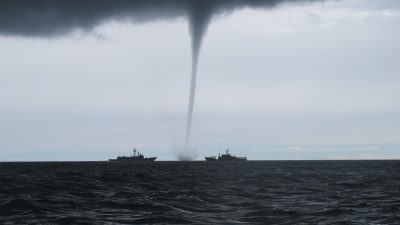The 1984 Philippine Catastrophe That Exposed Vulnerabilities In Disaster Management
Typhoon Ike, also known as Typhoon Nitang in the Philippines, struck the country in 1984, leaving behind unparalleled destruction. With winds reaching 170 km/h (105 mph), it became the second deadliest tropical cyclone in the Philippines during the 20th century. But what truly made Ike devastating was its timing and strength, as the Philippines was already grappling with a major economic crisis.
Meteorological History of Typhoon Ike
Typhoon Ike originated from a disturbed weather system southeast of Guam on August 21, 1984. Initially hindered by wind shear, it eventually intensified, becoming a tropical storm on August 27 and a typhoon by August 30. It reached its peak strength on September 1, 1984, with wind speeds of 170 km/h. The typhoon made landfall on Mindanao’s northeastern tip and caused devastation as it moved across the region. Ike continued to affect parts of Southeast Asia, including China and Thailand, before finally dissipating on September 6.
A Devastating Impact on the Philippines
- Fatalities and Destruction
- Ike claimed 1,426 lives in the Philippines, making it one of the most deadly storms in the country’s history.
- Surigao del Norte was hit the hardest, with nearly 1,000 fatalities and 27 towns flattened.
- In Surigao City, 90% of homes were destroyed, leaving 90,000 people homeless.
- Across the Negros Island, 4,000 homes were destroyed, and 75,000 people were displaced.
- In Bohol, Ike caused the deadliest natural disaster in the province’s history, killing 198 people and damaging over 89,000 homes.
- Economic Costs
- Ike’s economic impact was immense, causing approximately $230 million in damage. This included $76.5 million in crop damage and $111 million in property damage.
China and Thailand: The Ripple Effect
Ike didn’t stop at the Philippines; it continued to wreak havoc in China’s Guangxi province, where it became the worst tropical cyclone since 1954. The storm claimed 46 lives in China, damaging over 13,000 buildings and causing massive losses in agriculture. Additionally, two people were killed in Thailand due to flash floods.
Meteorological Analysis: A Powerful Cyclone
- Tropical Depression to Typhoon
- Ike’s journey from a tropical depression to a powerful typhoon was marked by intense intensification.
- It was classified as a tropical depression on August 26, and by August 30, it had strengthened into a full-fledged typhoon.
- Despite weakening as it moved inland, Ike maintained significant power throughout its journey.
- Preparation and Early Warnings
- In the Philippines, typhoon warnings were issued for provinces in Ike’s path, including Surigao del Norte, Cebu, and Negros.
- Authorities also broadcast evacuation warnings, urging people to seek higher ground to avoid the deadly storm surge.
A Path of Destruction Across the Philippines
- Surigao del Norte
- The province saw around 1,000 deaths due to Ike, as powerful waves hit the coast, sweeping away homes and livestock.
- Surigao City was severely impacted, with most of its buildings destroyed and thousands of homes lost.
- Negros Island
- Ike caused widespread destruction on Negros Island, with 4,000 homes damaged and 75,000 people displaced.
- The Ilog River burst its banks, flooding towns and killing many.
- Cebu and Mindanao
- In Cebu, strong winds and floods left 90,000 people homeless, while power outages affected the entire province.
- On Mindanao Island, 305 people lost their lives.
International Response and Relief
After the typhoon, the Philippine government initially distributed $4 million in aid but later accepted international support when resources proved insufficient. Over $7.5 million was donated globally, helping to provide relief to the devastated areas.
FAQs
- What was Typhoon Ike’s peak intensity? Typhoon Ike reached its peak intensity with winds of 170 km/h (105 mph) and a barometric pressure of 950 mb.
- How many fatalities occurred in the Philippines? Typhoon Ike caused 1,426 fatalities in the Philippines, particularly in Surigao del Norte and Negros Island.
- What was the economic cost of Typhoon Ike? Ike caused $230 million in damage, including $76.5 million in crop damage and $111 million in property damage.
- How did Ike impact China and Thailand? In China, Ike killed 46 people and damaged 13,000 buildings, while in Thailand, it caused flash floods resulting in 2 deaths.
- What preparations were made before Typhoon Ike hit? Local authorities in affected areas issued evacuation warnings, and typhoon warnings were broadcast across radio stations.
References:
Typhoon Ike
Philippines: Typhoons – Sep 1984
Philippines Typhoons Sep 1984 UNDRO Information Reports 1 – 4
Typhoon Ike ~ Detailed Information | Photos | Videos




